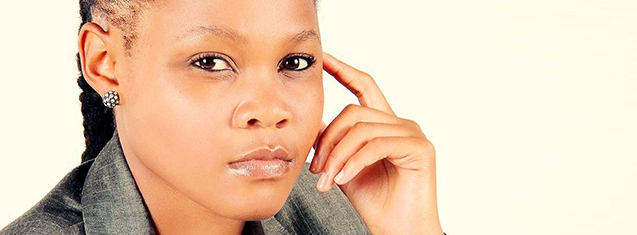
In an era where woman are consistently escalating up the echelons of power, this universal phenomenon is also making waves on the Bloemfontein Campus of the University of the Free State. As different citizens would recognise First lady Michelle Obama, Public Protector Thuli Madonsela, German Chancellor Angela Merkel and United Nations Ambassador Angelina Jolie, so it is also with Student Representative Council Secretary General, Dineo Motaung. She is among a handful of ladies within the student leadership who cherish her responsibilities diligently for the interests of human beings.
The SRC Consultation Desk is an official space created by the office of the Secretary General, aimed at being of service to students alongside the students’ academic pursuit. Inspired by Ubuntu, meaning ‘I am what I am because of who we are’ comes the task of cultivating and nurturing the essence of who we are, through constructive and honest dialogue between students and the university staff. It is by talking to one another that we will establish an environment that permeates our uniqueness and pollinates our consciousness with awareness that would cause us to act in unison in propagating the vision of the university.
Toward this end, the Secretary General has commissioned two SRC members to various stations every Monday and Wednesday, to interact with both students and staff. Please find the schedule reflected below. It is hoped that through this engagement, problems will not simply be identified, but that practical and feasible solutions will be offered.
“Through the SRC Consultation Desk I hope to see the manifestation and spirit of Ubuntu on campus by the time my term ends. With all that said, I am available for any concerns,” said Motaung.
Monday 20 April 2015, 12:00-13:00
SRC Accessibility and Student Support: Louzanne Coetzee
Station: Thakaneng Bridge
Wednesday 23 April 2015, 14:00-15:00
SRC Media, Marketing & Laison: Lethabo Maebana
Station: New Computer Labs (Entrance door)
Wednesday 29 April 2015, 14:00-15:00
SRC Student Development and Environmental Affairs: Victor Ngubeni
Station: Sasol Library (Opposite Deli)
Monday 4 May 2015, 14:00-15:00
SRC Secretary General Dineo Motaung
Station: Amphitheatre
Wednesday 6 May 2015
SRC Student Media: Masingi Sam
Station: Sasol Library (close to Deli)